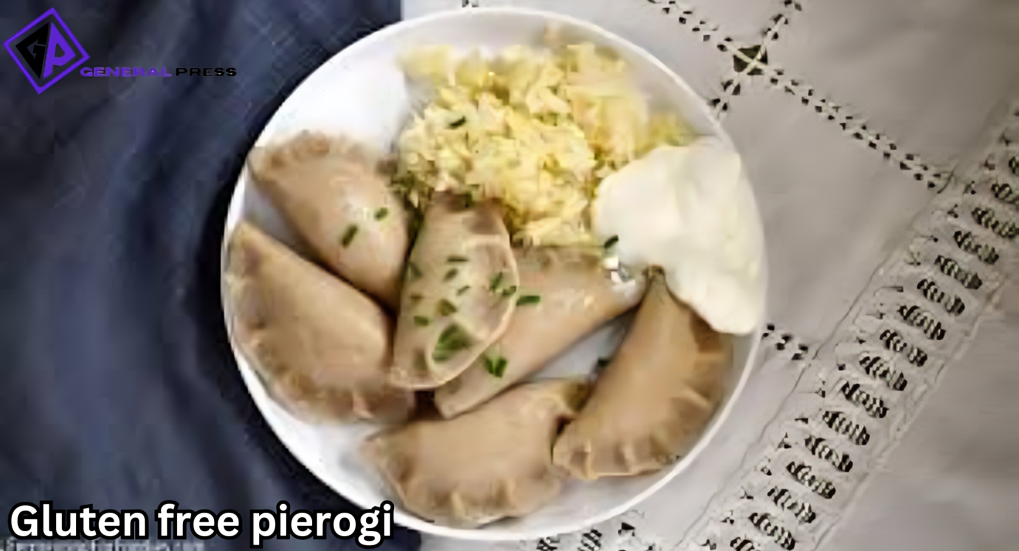Pierogi, the iconic dumplings of Eastern Europe, have long been a favorite comfort food, especially in Poland, where people consider them a national dish. Traditionally, people make pierogi from a dough that includes wheat flour, which can pose a problem for those with gluten sensitivities or those who follow a gluten-free diet. However, the growing demand for gluten-free alternatives has led to a rise in the popularity of gluten-free pierogi, allowing everyone to enjoy this delicious dish without compromising their dietary needs.
In this article, we’ll explore the history of pierogi, discuss the challenges of making gluten-free versions, and highlight the various ways to adapt this dish for those avoiding gluten.
A Brief History of Pierogi
The origins of pierogi are steeped in history and regional variation. While Poland often gets credit for popularizing pierogi, people across Eastern Europe make the dumplings with different names and fillings depending on the country. Pierogi were initially a form of peasant food, made with simple ingredients that were easy to preserve, such as potatoes, cheese, and meats. Over time, pierogi evolved to include a wide range of fillings, including seasonal fruits, mushrooms, and even sweet options, depending on local traditions.
In Poland, people typically serve pierogi with sour cream or a dollop of butter. They often enjoy them as a main dish or side dish during family meals or celebrations, such as Christmas Eve dinner. You can boil, fry, or bake pierogi, with each preparation method offering a distinct texture and flavor.
The Gluten-Free Challenge
Also Read: WestJet review: In-depth look at passenger feedback
For those who are sensitive to gluten, or for individuals with celiac disease, enjoying traditional pierogi is often off the table due to the use of wheat flour in the dough. Wheat flour contains gluten, a protein that gives dough its elasticity and structure. This is essential for creating the tender yet slightly chewy texture of traditional pierogi dough. Replacing wheat flour with gluten-free alternatives presents some challenges, as these flours behave very differently in dough-making.
Gluten-free dough is typically more delicate and can be prone to breaking apart. Additionally, the texture may lack the elasticity and chewiness that makes pierogi so enjoyable. The key to creating gluten-free pierogi is finding the right combination of gluten-free flours and binders to achieve a dough that holds together well while maintaining the soft, pillowy texture that defines this beloved dish.
Gluten-Free Pierogi Dough: What Works?
Making gluten-free pierogi dough requires using a mix of gluten-free flours that mimic the properties of wheat flour as closely as possible. Common gluten-free flour blends often include rice flour, potato flour, cornstarch, or tapioca flour. Some bakers also use almond flour or chickpea flour for added texture and flavor. However, it’s important to note that gluten-free flour blends can vary greatly in their absorbency, so the amount of liquid needed to make the dough may differ from the traditional recipe.
Another essential ingredient in gluten-free dough is a binding agent, such as xanthan gum or guar gum. These gums help replicate the stretchiness that gluten provides and hold the dough together. Additionally, some recipes call for egg yolks or egg replacers for a binding effect, while also helping to add moisture to the dough.
In many gluten-free pierogi recipes, you roll the dough thin, similar to its traditional counterpart, but you must take extra care not to overwork the dough, as it can easily become tough. Roll the dough on a lightly floured surface (using gluten-free flour) and seal the pierogi well before boiling or frying to prevent them from falling apart.
Delicious Fillings for Gluten-Free Pierogi
One of the joys of pierogi is the variety of fillings you can use, and the gluten-free version is no exception. You can fill pierogi with nearly anything you can imagine, from savory to sweet options.
Some of the most popular savory fillings for gluten-free pierogi include:
- Potato and Cheese: A classic filling made with mashed potatoes and farmer’s cheese or ricotta. This filling is rich and creamy and pairs perfectly with the soft dough.
- Meat: Ground beef, pork, or chicken mixed with onions, mushrooms, and seasonings. This filling offers a heartier, more substantial option for those looking for a satisfying meal.
- Mushroom and Sauerkraut: A flavorful vegetarian option, combining earthy mushrooms with tangy sauerkraut for a unique and savory taste.
- Spinach and Feta: A lighter, refreshing option that blends spinach with feta cheese, offering a savory filling that is both rich in flavor and nutritious.
- Sweet Fillings: Pierogi can also be made with fruit fillings, such as blueberries, strawberries, or sweetened apples, and served with a sprinkle of sugar or cinnamon for a dessert-style treat.
Cooking and Serving Gluten-Free Pierogi
Once you assemble the gluten-free pierogi, boil them in salted water until they float to the top, which usually takes about 3-5 minutes. After boiling, you can serve pierogi as is or fry them in a little butter or oil to give them a golden, crispy exterior. A common Polish way to enjoy pierogi is with a dollop of sour cream, though you can also serve them with caramelized onions or a sprinkle of fresh herbs, depending on the filling.
Making Pierogi More Accessible
With the rise in demand for gluten-free food options, many restaurants and food brands now offer gluten-free pierogi, making it easier for individuals with dietary restrictions to enjoy this dish. However, making your own gluten-free pierogi at home allows for customization of fillings and dough, ensuring that everyone’s preferences and needs are met.
FAQ:
1. What is WestJet’s overall reputation?
WestJet is generally well-regarded for its friendly service, comfortable flights, and competitive pricing. However, some passengers have raised concerns about delays and baggage handling.
2. How is WestJet’s customer service?
Passenger feedback on customer service is mixed. Many travelers commend WestJet for its polite and helpful staff, but some report challenges with long response times during high-demand periods.
3. What do passengers think of WestJet’s in-flight experience?
Passengers appreciate the comfortable seating and entertainment options. However, some have noted limited space on certain aircraft and wish for more variety in food offerings on longer flights.
4. Are there frequent flight delays with WestJet?
Like most airlines, WestJet experiences occasional delays, particularly during peak travel seasons. However, feedback suggests that the airline generally does a good job of keeping passengers informed about delays.
5. How is the food and beverage service on WestJet flights?
Many passengers find the food and beverage service satisfactory, especially on longer flights. Some report that the complimentary snacks are basic, and there may be limited food choices on shorter routes.
Conclusion
Gluten-free pierogi are a perfect example of how traditional foods can be adapted to be more inclusive, ensuring that everyone can enjoy this beloved dish, regardless of dietary restrictions. With a few adjustments to the ingredients and technique, gluten-free pierogi can be just as delicious and satisfying as their wheat-based counterparts. Whether enjoyed with a savory filling or a sweet treat, gluten-free pierogi are sure to bring joy to your table, offering a taste of Polish tradition that everyone can savor.




